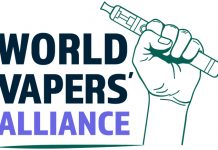The GFN (Global Forum on Nicotine) 2024 has ended!

So if you were not there in person or unable to catch the live streaming, here is a round up of the important points made!
If you would like to watch some of the discussions you can view them on the GFN YouTube Channel here.
The streams are available in English, Russian and Spanish. Below is an example – Day 1 in English…
Thursday 13th June (Day 1)
Opening and Keynote #1: Health and Economic Benefits of Tobacco Harm Reduction
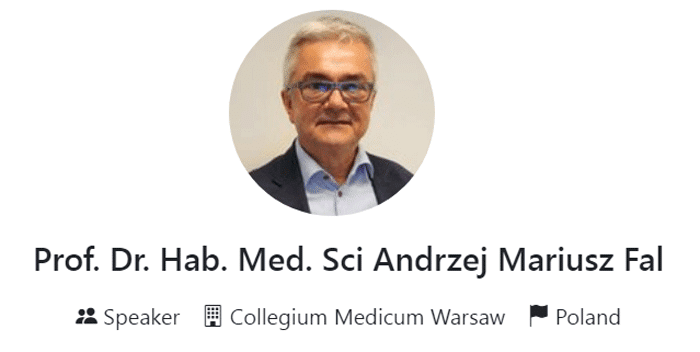
Professor Dr Andrzej Fal, Head of the Department of Allergy, Lung Diseases and Internal Diseases at the National Institute of Medicine in Warsaw said:
“I do not remember in the history of homo sapiens, any culture that wasn’t smoking things and drinking [alcohol]. I’m not quite sure that we can stop doing that, so that’s why harm reduction are the words that will go with us forever.”
“The direct costs of smoking include healthcare spending. But there are also the indirect costs such as those people who drop out of the workforce because they get sick as a result of smoking and can no longer work.”
“Applied wisely, fiscal tools [like excise taxes] can help people quit smoking.”
“But … as well as high prices for cigarettes, there needs to be much lower prices for several alternatives that are proven to have lower harms.”
“We do not question harm reduction in hard drugs. So why should we question harm reduction here? But we also need to find tools that ensure that this is harm reduction, and not harm spreading.”
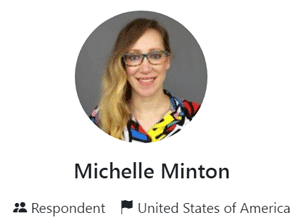
Michelle Minton, Senior Policy Analyst at the Reason Foundation said:
“Tobacco control is coercive.”
“It’s top down, and it’s not inclusive like tobacco harm reduction can be. Tobacco harm reduction actually fits in quite nicely with a lot of other of our public health initiatives and our attempts to help people.”
“I think one of the reasons we’re losing the war with smoking is because we continue to repeat the tobacco control model…when education about smoking risk was low, we could pick off the low-hanging fruit so we got a lot of return for the investment that we were putting into education.”
“Now… we’re only getting marginal returns, because we’re approaching it from this coercive, paternalistic, top-down, ‘the greatest benefit for all’ kind of approach, which results in a greater amount of resources needing to be spent for those efforts in order to get smaller and smaller reductions in smoking. It also requires greater paternalism.”
“Tobacco harm reduction could easily replace tobacco control in the way that it can be integrated into other things, and in the way that its unintended consequences are often largely beneficial.”
“With people who have often been pushed out, you’re bringing them in, you’re giving them support, you’re giving them community and you’re hopefully connecting them with other services that would help their other determinants that seem to have very little to do with tobacco itself, like mental health or housing.”
“… in tobacco control the unintended consequences can include stigma, for example, or people losing their jobs or losing their housing, or being forced out of social engagement because of denormalisation.
“We stigmatise parents and we raise taxes on cigarettes to convince parents to quit smoking so they’re not modelling smoking for their children.
“But what kind of effect does that have?“
“In America, if you’re in poverty and the government provides you with housing, we’ve banned smoking indoors.”
“…those who don’t quit smoking can get kicked out of public housing? Then you have financial stress and housing instability for children, plus the modelling of smoking from their parents. Are those parents better off? Are those kids better off from that policy? “
Workshop #1: Europe and Central Asia – From Oversight to Action: Addressing Smoking Rates in Vulnerable Populations (RU language w/ EN translation)

Uladzimir Pikirenia, a Belarus-based psychiatrist specializing in public health said:
“It seems that we punish those who smoke. And I would say that’s a global problem.”
“People with schizophrenia live around 15 years less than the overall population. The main reason for this is diseases brought on by smoking.”
“…on average, 70 – 90% of people with schizophrenia smoke, similar if slightly lower rates among people with bipolar disorder, and similar again for people with depression.”
“If we talk about cancer risks for people who consume drugs, it’s a depressing topic – because most do not live long enough. They die from other diseases – injecting damages their circulation system and increases their stroke risk, with smoking then increasing this sevenfold.”
“Public health is trapped, if you like, in an agenda created to deal with infectious diseases. For example, we find it challenging to refocus from an opioid market to the new situation, which is seeing the emergence of synthetic drugs that are not only injected but also sniffed or smoked. But this is of little interest to the foreign donors who finance harm reduction in Eastern Europe and Central Asia – and governments are not interested either.”

Alla Bessanova, a coordinator of the Expert Feminist Council of Eurasian Network of People Who Use Drugs
“Kyrgyzstan used to lead the way in harm reduction within Central Asia – needle exchange was launched in 1999, and substitution therapy in 2002 – but that’s sadly no longer the case. Harm reduction isn’t just needle exchange and prescribing; there should be rehabilitation centres, which we don’t have since 2019, for example.”
“Our drug situation has changed significantly in the last ten years. Synthetic drugs, produced in China, have largely replaced the opiate market, and people no longer inject, but smoke or sniff the substances. These people do not need clean needles. But the existing harm reduction programmes have all been built to protect society from us, not to offer a better quality of life or to improve health.”
“With tobacco harm reduction in Kyrgyzstan, I think it is going to be difficult. One third of the population is below the poverty line. If people are worrying about how to feed their children, how can you persuade them to take care of their health?”
“Realistically, it will depend on civil society to tell people about harm reduction for tobacco. From the government’s point of view, it’s a product that brings in revenue from excise tax. Politicians have been saying some questionable things about vapes recently – for example, this week, one member of the government argued for a huge fine for vaping in public places.”

Jarkyn Shadymanova, an associate professor at the American University of Central Asia.
“Nasvai is an oral tobacco, produced locally in Kyrgyzstan and other parts of Central Asia, and in Pakistan. People have used it for several hundred years and it is part of the cultural practice of the region.”
“Because it is part of the culture, its risks to health have been largely ignored. But nasvai contains slaked lime and sometimes animal droppings, particularly chicken or camel droppings. Obviously, this can cause disease.”
“Analysis by a Swiss company identified 86 substances harmful to health in nasvai.”
“Recently, it has been banned in several countries – including Kazakhstan, which banned production of the product, and Russia, after an increase in the number of young people who were using it.”
“However, nasvai, as a smokeless tobacco, is similar to snus in Sweden – which is a safer tobacco product. In Sweden, snus production is regulated, and harmful substances removed.”
“Consequently, Sweden has low smoking rates and low oral cancer rates. In Kyrgyzstan, it’s the opposite. No one is overseeing production. No one can be sure what’s in the product. We dream of having regulation like Sweden has.”
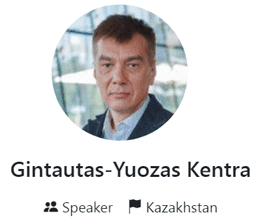
Gintautas-Yuozas Kentra, a media professional from Kazakhstan
“Unfortunately, many health professionals lack both context and understanding of harm reduction. But really, this is an issue of cost. The treatment of cancer is much more costly than an outreach campaign, than providing people with good information. Combating the effects of tobacco smoking or drug use is costly.”
“Counterfeit vapes are a problem. Kazakhstan does not regulate vaping products so instead, the government is simply banning them. This opens the door to counterfeit products. After the ban comes into force, the authorities will clamp down on official sellers – and we will see another surge of poor quality, fake products.”
“Under Prohibition in the US alcohol didn’t simply disappear. Bans mean we don’t know what kind of ingredients will be in a vape tomorrow.”
“The right path is the introduction of technical regulations and control. The risk of bans is that a law is passed, but the products continue to be sold but without any control. We must expand our vision. While being prudent, we must not hide behind bans.”
Michael Russell Oration and Awards
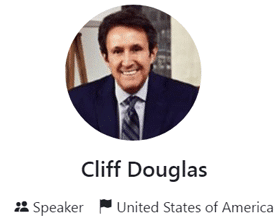
Cliff Douglas, President and CEO of Global Action to End Smoking
“We owe it to people to listen, to understand their challenges, to understand how they can reduce their health risks if they can’t or don’t otherwise want to stop smoking.”
“Too many healthcare providers and the consumers they serve believe that their only options for quitting are either going “cold turkey” or using a medicinal nicotine replacement product such as nicotine gum or the patch.”
“But we know that there are many individuals who either can’t or won’t quit smoking using cessation medicines.”
“It is a moral imperative that they not be forced to choose between those limited, and too often ineffective, options or nothing at all. Requiring people who smoke, in effect, to simply
“quit or die” is inhumane, and it’s unacceptable.”
“We must recognise and build upon the reality that well over a hundred million people across the globe have already made the decision to use vaping and other non-combusted nicotine products in their dedicated personal efforts to avoid painful and early deaths from smoking.”
“…we also know they are more appealing, popular and effective for many people who are in urgent need of practical options to save their lives.”
“And we know that in many cases, as reported by the Cochrane Reviews and others, e-cigarettes, for their part, are often more effective than nicotine replacement medications in helping people stop using combustible tobacco products.”
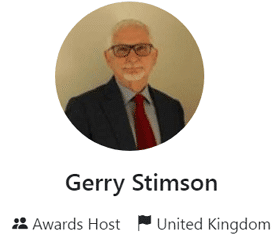
Professor Gerry Stimson, co-founder of GFN.
“In Australia, there’s almost universal hostile opposition to vaping. Colin’s (Mendelsohn) impeccable credentials from a long career in general practice and smoking cessation have offered no protection from personal attacks, attempts at censorship, rejection by medical journals, complaints to professional bodies and misrepresentation. Despite this, he has never given up or silently slipped away. He really is a one person advocacy organisation.
“Australia will eventually give up its bizarre attempts to regulate vapes out of existence and Colin will have helped make that happen.”
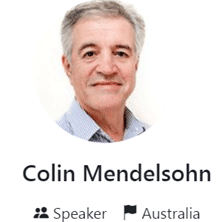
Colin Mendelsohn, Founding Chairman of the Australian Tobacco Harm Reduction Association
“While well intended, highly restrictive regulations just don’t work”.
“History has shown that harsh restrictions on a popular product simply send it underground. People find other ways of getting it.
“Australia now has one of the highest youth vaping rates in the Western world”
“Australia’s experience shows that highly restrictive policies lead to substantial unintended, harmful consequences. Politicians have a responsibility to understand the effect the policies they are pushing are likely to have in the real world. When policy fails, the costs – monetary or otherwise – can be significant.”
“Over 90% of Australia’s 1.7 million vapers use the black market, a market that’s controlled by organised crime groups who import and sell disposable vapes in their millions. These vapes are totally unregulated and sold freely. Criminals compete with one another in turf wars to control market share, leading to fire bombings extortion, homicides, intimidation – just like in all other drug wars. The vape market is Australia’s second biggest illicit drug market, which we have created.”
“A couple of days ago, a health minister said in a radio interview, ‘I’m determined to drive the vaping industry out of the country’. Rather than being seen as an opportunity, vaping is a scourge on public health, apparently, in Australia. That’s what we’re up against.”
“A year ago, I was depicted on a national current affairs programme as a representative of Big Tobacco. It was very clear – a hit job, the usual sort of thing. I complained to the television channel, who denied that was their intention. But I just found out that the regulator disagreed with them. Last night, the TV channel published an apology on their website. It won’t make a lot of difference. But it makes me feel better.”
Friday 14th June (Day 2)
Keynote #2: Over/misinterpretation of the precautionary principle in relation to safer nicotine
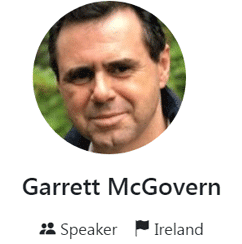
Dr Garrett McGovern, addictions specialist and Medical Director of the Priority Medical Clinic, Dublin, Ireland
“On the surface, the precautionary principle is sensible – and there are times when it is valid to follow it.
“But, when misapplied in public health, it has caused unnecessary harm and death.”
“That’s what’s going to happen with electronic cigarettes.”
“Smoking is deadly. Electronic cigarettes are not deadly. We’re over 20 years in, and we’re not seeing those harms.”
“We know that if we stop people using electronic cigarettes, many of them will otherwise smoke.”
“Many smokers have tried so many things in their efforts to quit – NRT (Nicotine Replacement Therapy), varenicline, Champix – and nothing has worked. And then they hear someone on the radio saying very authoritatively that they are no better off using electronic cigarettes than smoking. That angers me. Many of these people are meant to be promoting public health, but instead, they’re practising harm reduction denialism.”
“Harm reduction is the cornerstone of everything we do in medicine. There’s not very many things in medicine we can cure – all we can do is reduce symptomatology. And in medicine, we shouldn’t make that difficult. But with this, for some reason, we’re making it difficult.”
“Given the unequivocal support the World Health Organization (WHO) has given to drug harm reduction, its deeply negative stance on e-cigarettes is bizarre, bereft of evidence and increases the risk of harm to people who smoke.”
Alex Wodak, drug law reform advocate and physician
“Put aside tobacco harm reduction for a moment, and think of the sweeping social policy reforms across many issues over the last 30 or 40 years. Look at drug harm reduction: between 80 and 90 countries have needle exchange programmes now. That was unthinkable in the 1980s and 1990s, at the start of the drug harm reduction movement. We can draw a lot of inspiration from what’s happened with marriage equality as well. Sure, I wish it had gone faster. But undoubtedly it’s happening.”
From the discussion
Tikki Pangestu, Visiting Professor, National University of Singapore, and former Director of Research Policy and Cooperation at the WHO
(speaking from the floor)
“I am very disappointed in the stance that the WHO has taken on harm reduction, especially because many LMIC’s (Low and Middle-Income Country) look to the WHO for guidance, lacking capability to objectively assess the evidence and make their own policy decisions.”
“The WHO gave birth to the Framework Convention on Tobacco Control (FCTC) and like any parent, they will protect it at all costs. But the question of resources is more important. The TFI (Tobacco Free Initiative) and many tobacco-related activities are sponsored by one man.”
“The only thing that will make the Director-General sit up is if member countries demand change. Progressive countries like the UK, like New Zealand, like Japan and other smaller countries, must collectively say to the Director-General that a more open, objective discussion around this issue is needed. At the last COP10 in Panama, we were beginning to see some countries agitating for something like this to happen. All of us must work together to move this along until we reach that tipping point.”
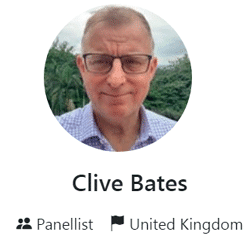
Clive Bates, The Counterfactual
“The precautionary principle is a symmetric thing, looking at both the consequences of action and inaction. It isn’t a one way bet against innovation – you must consider what happens if you don’t have the innovation. So, if you don’t have e-cigarettes or low risk products because you act on the basis that you think residual uncertainties in the future are overwhelming, what are the consequences of doing that? You let an epidemic of cigarette smoking go unchecked.”
Alex Wodak
“We should always be mindful of wildcards. The country with the most smokers in the world is China. The world’s biggest tobacco company is the China National Tobacco Corporation (CNTC), producing something like 40% of the world’s cigarettes. Currently, China is against tobacco harm reduction. But vaping is not uncommon in China, and the CNTC has the world’s largest collection of tobacco harm reduction patents. Acquiring that portfolio must have cost billions of dollars, and couldn’t have been done without the approval of the Chinese Government, which owns the CNTC outright. It only needs Beijing to switch from being against to being pro tobacco harm reduction and this whole debate’s over.”
Workshop: Regulatory risk, investment and tobacco harm reduction
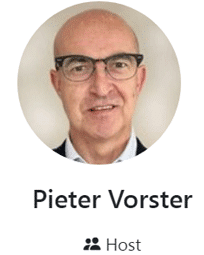
Pieter Vorster (Host), Idwala Research
“Investment is needed at a significant scale to fund the development of products that are more satisfying and cheaper for consumers. And investment is driven by returns. But if you have a situation where these products are banned in half the world, their potential market size is clearly limited.
“The higher the regulatory risk and the more uncertainty there is, the more return investors will require.”
“Markets where safer nicotine products are unregulated, where it’s a free for all, are very fragmented – this means there’s no pricing power. That makes it very unattractive for investors. In addition, you have potentially unsafe products, inviting extreme regulation, and you have potentially irresponsible marketing practices. You might assume those are great markets, but from an investor perspective, they are not.”

Dr Marina Murphy, scientific communications and engagement consultant
“Today, larger companies across all sectors are maintaining their dominance because they’re in a good position to leverage the digital revolution.”
“It remains to be seen how this will play out in our sector. Will the big companies stay at the top, or will they be pushed aside by smaller companies?”
“Bigger companies are having to change their mindset. Companies that sold a glorified agricultural product – dried leaves wrapped up in paper (a cigarette) – are now selling high tech gadgets. It’s difficult to achieve that change in mindset, especially if there are internal conflicts between the older part of the business selling cigarettes and the newer part of the business.”
“The sector has been very good at creating innovative products that reduce harm. The chemical profiles of many of these newer products are very close to or almost identical to an NRT.”
“But we’re stuck in a defensive mode – we’re still defending harm reduction when the debate has actually moved on to nicotine. The regulator doesn’t understand, the media love a scare story and the consumer is left confused.”
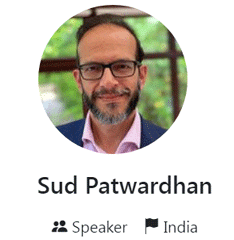
Sudhanshu Patwardhan, Centre for Health Research and Education (CHRE)
“Tragically, through ‘health imperialism’, regressive policies on safer nicotine have managed to reach LMIC’s much sooner than the transnational tobacco companies, or innovative tech companies, or even pharmaceutical companies, which had the opportunity to provide safer alternatives to risky tobacco products.”
“It’s baffling, as there is a fortune to be made. There are nearly 300 million users of risky tobacco in India alone, another 300 million in China. While India is classed as an LMIC, it’s home to billionaires, millionaires and a massive middle class. As well as those who can’t afford costly safer nicotine alternatives, there are a huge number who could.”
“There is a lack of local regulatory science capacity. Connect the dots between this and health imperialism; ideas are exported to LMIC’s and the local regulatory authorities are almost obliged to accept. There is no local science to support the principles of tobacco cessation or tobacco harm reduction. That drives policy that is wrong – for public health, for consumers, and a missed opportunity for making real change.”
“Transnational companies talk a lot about research, but it all happens in the west. Companies are rushing to launch safer nicotine alternatives in countries without actually doing local research. That’s not on. They have to up their game – otherwise I do not accept that transformation is happening.”
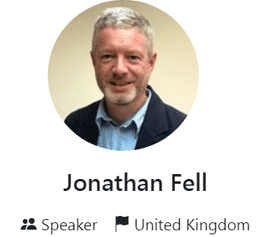
Jonathan Fell, tobacco and nicotine sector consultant
“Many fund managers don’t understand or don’t believe in tobacco harm reduction – they see the headlines about flavour bans and read the scare stories, and they think these products are no better than cigarettes.”
“Two UK companies, among the world’s largest tobacco businesses, are consequently operating on very low valuations – they’re priced as if they’re going out of business in the next five years.”
“Instead of investing in trying to make better reduced-harm products, many are buying their stock back, or trying to maximise their cigarette cash flows. Because why invest in products that might not bear fruit for 10 years, if the company won’t exist in 10 years?”
“Big, publicly-listed companies tend to be quite conservative; they have an existing business model and reputation to consider. Small companies have a higher risk tolerance, including with tricky regulatory frameworks. Some even have tolerance for, essentially, operating illegally – they maximise profits in the short term, and cut and run when things get too hot.”
“With the wrong regulatory framework, then, as in Australia, the US, or India, the black or grey market takes over. And that damages the concept of harm reduction, creating pressure for even more crackdowns.”
Panel discussion #2: Legislation and regulation – health and economic consequences

Clive Bates: “You can’t assume or you shouldn’t assume the regulation is inherently justified. It limits what people can do. It limits everything.”
“Regulation has to be justified on its own merits. And those are sometimes simply illusion.”
“Children are used to create emotive campaigns, to create a sort of moral panic and to justify things that would not be justifiable if they were done to adults.
“There are 18 times as many adults using nicotine products as there are young people in the UK, but all of the political focus is on the small number of young people who are vaping.”
‘The needs of those adults are served by a legal supply chain, responsibly and proportionately regulated with acceptable risk.”
“That should constrain the prohibition instinct, which has seen the rise of a big illegal and unauthorized market in Australia and the United States.”

David Sweanor, Law
“Regulation is not something that should be used to control behaviour. There’s a limit to how much you can move a market, you can facilitate things.”
“People can only make as good a decision as the information and the options available to them allows.”
“It has to be a consumer offer that makes sense to them. The bottom line is you have to at least start with that and see how far do you get.”
“They are individuals. It’s a matter of empowering them to make decisions that would be better for them, but it’s their decision what they’re going to do.
“There are over a billion cigarettes smokers, and that should be seen as a public health emergency.”
“We should be looking at whatever we can do to move people as rapidly as possible to non-combustible products.”
I think it says a lot about the sociology of the field that all the end game strategies are coercive.”
“We want to force people to change in ways that they don’t want to. What if we told them the truth? What if we gave them better products?”
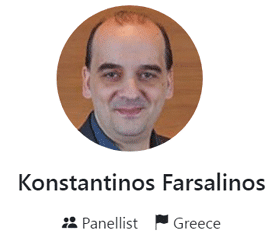
Konstantinos Farsalinos Universities of Patras and West Attica, Greece
“Before discussing how to regulate things, it is important to set the goal for the regulation so why do we want to regulate it? In my opinion, in the case of harm reduction, the reason and the goal of the regulation is to help consumers to make informed decisions.”
“Do we have a nicotine free society? 0% use among youth?”
If you go down that path, “the only thing that’s going to happen is that, every year you’re going to add more and more restrictions that have no effect. It’s a dead end, a vicious cycle. So, set realistic goals and find realistic solutions.”
Workshop: What does independent mean in relation to THR science?
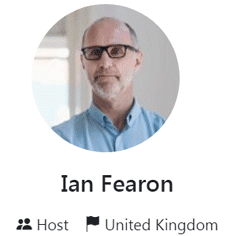
Ian Fearon, consultant
“I’ve noticed an upsurge in people trying to prevent the tobacco industry, or the nicotine and e-cigarette industry, from publishing its data in scientific journals and disseminating it. The British Medical Journal have a policy which says any tobacco company shall not publish in any of their journals.”
This policy has been extended to all companies that produce, distribute, market and sell tobacco and tobacco-related products, including nicotine products and electronic cigarettes; associated companies and organisations like PMI-owned Vectura, Global Action to End Smoking and the Institute of Economic Affairs; and consultants who work for tobacco and e-cigarette manufacturers. The interesting exception is supermarkets.
“If you’re a supermarket, you can publish scientific data on tobacco harm reduction. So, start sponsoring Lidl and Waitrose and Walmart and they’ll publish your data for you because they’re allowed to.”

Colin Mendelsohn, Founding Chairman of the Australian Tobacco Harm Reduction Association
“We should all be sceptical of all research because biases and conflicts of interest are everywhere. They’re not just financial, there are all sorts of career and peer and ideological reasons.”
“The same standard of peer review should be applied to all publications, no matter who’s written them. They should all be assessed to a high standard. Unfortunately, we have a long way to go with improving peer review.”
“The tobacco company research we are talking about is that on their harm reduction products and advancing knowledge about products that will save lives. We’re not talking about them promoting their cigarettes.”
“As long as that science is done well, I don’t care where it comes from. I don’t care what products people use, if it improves health. I think we need to hear everything they’ve got to say, as long as it’s done properly, and we analyse it as best we can.”
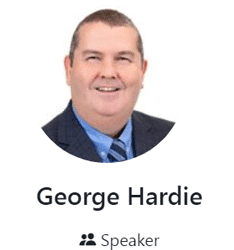
George Hardie, Dr Vince Clinical Research, Kansas City, US
“How can [industry] be open and transparent when we’re basically not allowed to publish? That’s just crazy. It’s all about education for me. We just need to be out there trying to educate people who maybe don’t quite understand the science.”
“I have worked for both pharma and tobacco companies. Going back many years, we’re all aware that the tobacco industry has made some catastrophic mistakes, but so have pharma.”
“All I can say is that in my time, when I transitioned over from pharma to tobacco, I was actually quite surprised at how well clinical studies were monitored. There’s far more monitoring in a tobacco study then there is in a pharma study. If anything, the tobacco industry is probably scrutinised more and quite rightly so.”
“Can the data be trusted? Absolutely, yes, but everybody has an opinion.”
“If you’re anti-tobacco, you’re always going to say, it shouldn’t be trusted. If you’re pro-tobacco, you’ll say it should be trusted. It’s a democratic world we live in, however, the data is the data.”
“ With the tobacco industry there have been issues where they’ve maybe cherry picked some of the data, but so have pharma.”
“Nowadays, and I can only speak for the tobacco company I used to work for, it is about transparency. Everything that we’ve done clinically, we published, or we tried to publish. We did have a few problems, but we were open and transparent. And that was the leadership’s ethos, get it out there, let people see it, whether it’s good data or bad data on that product. So, yes the standards are unbelievable.”

Sarah Cooney, publication expert, UK
“I don’t think it’s going to happen that every publisher is going to ban tobacco, but it would be a tragedy if it did.”
“I did an analysis about journals that didn’t accept tobacco-funded work, and I was really shocked to learn that someone from Springer had tried to persuade Harm Reduction Journal to go down the censorship road. I was really shocked because my analysis showed that mainstream commercial publishers aren’t likely to go down blanket censorship roads, because they have a lot of corporate commercial clients themselves.”
“Typically, the journals that have a censorship ban are owned by medical and public health charities, so the censorship ban is sort of aligned with what their membership is expecting and what they want.
“You can’t do much about arguing with the British Medical Journal, or the American Thoracic Society.”
“The actual number with an explicit ban is relatively small.”

Marewa Glover, Centre for Research Excellence, Indigenous Sovereignty and Smoking
“I’m the tobacco section editor for the Harm Reduction Journal and there was some agitation for [the journal’s publisher] Springer to prohibit papers from the tobacco industry across the board. The journal’s editor-in-chief, Nick Crofts, discussed this with all of the section editors, and some of them even thought that that was a good idea. But the principles of harm reduction come first for the Harm Reduction Journal. This is about not doing harm and it’s about consumers. Censoring and prohibition are antithetical to the principles of harm reduction.”
“There are some very excellent academic scientists in tobacco control. And there are some who are not doing science, they’re doing strategy and there’s many, many personal motivations.”
“With science, you need both sides. To really understand to advance our knowledge, you need all sides.”
Workshop: Regulation round up – global perspectives
The EUTPD (European Tobacco Products Directive) is in the process of being revised which many other countries take their cue from. The very recent elections to the European Parliament have shown a shift to the right and that is going to be crucial in terms of what the new regulation says. The EU is already talking about flavour bans and possibly an even greater reduction in the already too low levels for nicotine.
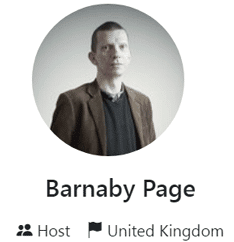
Barnaby Page, Tamarind Intelligence
“Flavours and taxation will be the main battlegrounds.”
“I’m convinced that the majority of the people who always bring forward the ‘let’s protect the kids argument’, don’t really care about the kids. They just want to ban products they personally don’t like because otherwise they would actually listen to the kids. It’s always kids, but they refuse to listen to them.”
Michael Landl, Director of the WVA (World Vapers Alliance)
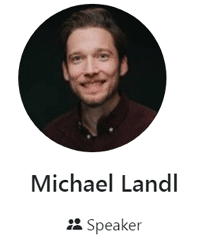
“Chinese regulations are important because 90% of the world’s e-cigarettes are manufactured in China. China’s e-cigarette regulatory framework covers the legal system, product standards, taxation and enforcement including bans on sales to minors and flavour bans such as fruit. But these regulations only apply to products domestically available in China and only apply abroad in countries where products are unregulated.”
“You know, I think the problem with the FDA (US Food & Drug Administration) situation is that on a theoretical level the model makes sense – pre-market reviews on different products. But if you have a sudden influx of 700,000 products that consumers are already using and they’re out there, then it’s not that the model is wrong, it’s just completely in appropriate for the market situation.”
“To exaggerate only slightly, I would say that if there was not a single child vaping in the entire world, we would still have a youth vaping issue because perception is more important than reality in the formulation of policy and regulation in this sector.”
“We are living in this really weird time where it actually is the tobacco companies that are more positive towards helping people quit or switch to a less harmful product than the public health organizations and the WHO.”
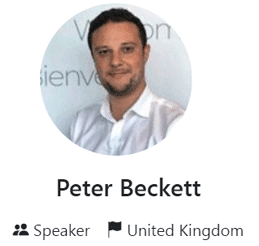
Peter Beckett, Clearing the Air
“The situation in the States is insane. The FDA has only authorised 23 products when there are thousands of products out there on sale. I know the world looks to the States when it comes to standards, but don’t do that around regulation.”
“Since leaving the EU, the UK is not bound by the revised EUTPD but instead put forward the Tobacco and Vapes Bill. This was lost due to the election but will likely come back later and gives the Secretary of State for Health the power to introduce future regulations without going through Parliament. But we will have to see where that lands.”
[Talking about the Smoke-Free Generation idea]
“Prohibition is prohibition and it never works. I don’t see how that will ever work in practice when in years ahead, you can have two people one aged 39 and the other aged 40 where the 39 year old cannot buy cigarettes. I cant see how you enforce that and of course you create an illegal market as well.”
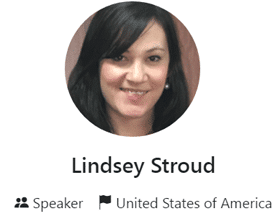
Lindsey Stroud, Taxpayer’s Protection Alliance
“The EU regulations don’t just affect the EU, but many regions of the world as well where EU regulations are just copied and pasted into legislation.”
“What’s regulation going to look like in 2030? Nothing’s changed guys. The other side, will continue to try and put a sticking plaster on top of a cut that doesn’t exist and is going to look messy is the best we can hope for.”
Workshop: LATAM (Latin American) session (ES language w/ EN translation)
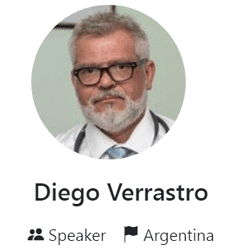
Diego Verrasto, RELDAT
Consumers often know much more than doctors.
“In my particular case, I’m a consumer, I’m a user, and I’m also a doctor. So, I have that background and that capacity of having empathy for consumers. Because the consumer is a patient. So, I can’t not have empathy for the illness that this patient has.”
“I think that with some medical issues, doctors often look at patients from an elevated position. Nowadays, in medical practice, that shouldn’t exist anymore, because when I lose this contact with my patient, I lose chances to be able to give him a new opportunity or to look for a good solution. I can be a great doctor, but if my patient doesn’t understand what we want to do, I’m the worst doctor that exists. To be a good doctor, I need to have a good patient. When I’m referring to a patient, this is a tobacco user or a vape user.”
“Usually when doctors transmit their knowledge, they do it within their own environment, within their own tribe, to people like them. So, it’s tough for doctors to switch this technical and scientific wording to normal people. You need a different capacity to be able to do this, to be able to understand how to communicate this information clearly without going into terminology which people on the other side might not understand. This demands some extra work from doctors. Doctors are used to talking in conferences with other doctors, and we all have the same language. To take this to the wider population becomes very tough sometimes.”

Fernando Bueno, General Surgeon at the Hospital Central de la Defensa “Gómez Ulla” in Madrid
“If I have to criticise us doctors, we have to read more. Not all doctors are interested in tobacco. It probably interests a very small proportion of doctors. When you start reading, and we have to study a lot, you notice that there are some theories that aren’t backed up by science. So you’re in the middle between the World Health Organization and the patients that demand the treatment.”
“Doctors should listen to their patients. If you have any scientific information, go and give it to your doctor.”

Carmen Escrig, Spanish Association of Personal Vapourisers Users (ANESVAP)
“There is this duality that we have as doctors and users. On the side of users, a smoker doesn’t feel ill, a vaper isn’t sick, but doctors do see them like that. And that’s because of the definition of addiction and dependency. People are dependent on nicotine. An addiction is an addiction when it doesn’t allow you to carry out your life normally. But nicotine doesn’t do this. It doesn’t not let you work. It doesn’t exile you from society. So, a smoker or a vaper doesn’t see himself as sick, and it’s very tough to overcome this barrier from doctors to patients.”
“Users [of safer nicotine products] feel that anyone with a white [doctor’s] robe feels free to be condescending when it’s the patients that know a thousand times more about harm reduction science. This is a problem.”
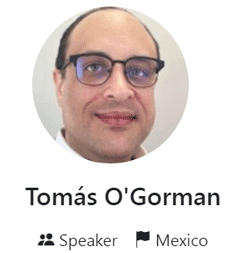
Tomas O’Gorman, INNCO
“The campaigns of misinformation carried out by organisations such as the World Health Organization don’t just have society and consumers as their victims. They also victimise doctors and regulators. The issue for a doctor is that I suppose he’ll trust the World Health Organization. If he sees that they talk very negatively about e-cigarettes, he probably won’t stop to ask about why they’re saying this. He’ll just give their example.”
“Doctors have to have empathy with their patients and they have to understand that not everyone can adapt to what the doctor wants. So, a true doctor has to adapt to the circumstances of his patient and remember that as a doctor they should not recommend their patient should stop smoking due to the morality of the act, but due to the issues that tobacco causes. Once a doctor sees that the harm reduction product doesn’t cause this, he shouldn’t have an ethical or professional problem in recommending these products. The doctor should look for products that don’t cause damage or that cause less damage. Because if he knows that his patient won’t stop smoking, why does he insist with traditional methods such as abstaining, when a method exists for him to stop smoking and remove the death that could be caused if he keeps smoking.”

Jorge Palma, ASOVAPE PERU
“Most doctors who aren’t users do not understand us consumers. We want to stop smoking, but we want to keep consuming nicotine. And sometimes people just can’t leave nicotine. So, it’s very tough when you sit in front of a doctor when all he’s going to say is ‘this is damaging you, stop smoking’. I need someone who is going to help me. And yet he’ll just say, ‘no, stop smoking, or you’re going to die’. For many of us, it’s almost impossible to leave nicotine. So, if there’s a tool that allows us to remove certain risks, well, that is great.”
Saturday 15th June (Day 3)
Keynote #3: THR market influence – past, present and future

Vivien Azer, Wall Street financial analyst – tobacco, nicotine and cannabis industry expert
General quotes from Vivien Azer (limited specific company/product mentions)
“The outlook is for the disruption from novel nicotine products to accelerate, because the major public tobacco companies are incentivising consumers to move away from higher risk combustible cigarettes.”
“If you strip out China, the major public companies account for the vast majority of the total nicotine marketplace. They are in a position to drive change in consumer behaviour. They’re already talking to the core, combustible cigarette smoker and controlling close to two thirds of that market – PMI (Philip Morris International) being the market leader with over 28% share, and BAT (British American Tobacco) a very close second.”
“These significant changes for global tobacco companies reflect an understanding that consumers really are wanting to shift to reduced risk products, but it’s also an acknowledgement that they were operating in an industry that was in structural volume decline.”
“Three watch outs for the US – number one, the menthol ban, although it doesn’t look like anything will happen in an election year. Two: the modern oral category is coming under increased scrutiny, given the category’s growth, driven by Zyn (Nicotine Pouches). Lastly, the very low nicotine cap introduced by Scott Gottlieb (Former United States Commissioner of the FDA) in 2017 under the Trump administration. This is a really disruptive policy change that ultimately could shake up the US industry.”
“The structural volume decline [in combustible cigarettes] ultimately also informed the expansion into the cannabis category; four out of the Big Five public companies have made some kind of investment, which vary in terms of size and scope. From a financial standpoint, Altria is the most notable. PMI, BAT and Imperial seem to be more IP focused, looking for synergies, namely across the vapour sector. But the regulatory evolution of cannabis happens in fits and starts and in the cannabis market, things tend to happen a lot more slowly than the investment community would have expected.”
More specific quotes from Vivien Azer (company-by-company assessments)
“The ambition that PMI has laid out is that it is not just good for consumers, it’s not just good for public health, but it is also very good for shareholders that they are migrating their portfolio away from combustible cigarettes. Their ambition for 2030 is for two thirds of their revenues to come from non-combustible products; it’s about 40% today. PMI aims to do that with a combination of both heat-not-burn as well as Zyn, with a smaller focus on the e-vapour category, where they’re taking a more targeted approach so as not to distract the organisation given their significant market share leadership in the heat-not-burn category.”
“British American Tobacco had established a three-pronged priority, equally focused on heat-not-burn, modern oral as well as in e-vapour. They have had to accelerate some of their investments as a result, and they reduced their medium-term earnings outlook to fund more reinvestment, particularly in glo; the glo Hyper2 X is the most recent offering into the marketplace. Their goals are a little bit further out.”
“Altria, the US market share leader in the combustible cigarette segment, has a track record on innovation that has been a bit lumpy, given the investment and then subsequent divestment of JUUL. But the company does have an ambition to double smoke-free revenues to $5 billion by 2028.”
“Japan Tobacco had a front row seat to the disruption that we saw in the heat-not-burn category with the introduction of IQOS in Japan in late 2014. The company had to take an aggressive posture to pivot their innovation focus into heat-not-burn, where they established a portfolio 10 years ago that was more focused on lower nicotine offerings. Ultimately, that did not resonate with the consumer. So they’ve gone to higher heat heat-not-burn, higher nicotine delivery offerings, and they aim to break even by 2028.”
“Imperial pulled out of the Japanese heat-not-burn market and went instead to select European markets where they had good market share, route to market capabilities, and felt like they had the right to compete – not necessarily win, just compete. The resetting of those aspirations is quite a positive for the industry, given that Imperial is taking a value-priced approach. This should engage more price-sensitive consumers and draw them into the category.”

Jonathan Fell, tobacco and nicotine sector consultant
“The five major publicly listed tobacco companies are now getting between 4% and 39% of their revenues from non-combustible products. The next tier, of often state-owned tobacco companies around the world, are a long way off those kinds of revenue share numbers. State-owned companies have often not faced pressure to change.”
“The larger publicly listed companies are not [moving into non-combustible products] just because it’s the right thing to do. Nor is it about maximising profits or financial returns in the short term. Selling products that are alternatives to cigarettes depresses margins and returns. This is about survival. The big companies are doing this because if they don’t, they’ll eventually go out of business. They have to react to what consumers want.”
“Transformation of the tobacco industry has the potential to bring tremendous public health benefits. And yet it’s often viewed with suspicion by the public health and tobacco control communities. Maybe this is because it’s market-driven, and not a top-down health initiative of the sort that they might be more used to supporting – ‘not invented here’ syndrome, you might call it.”
“Perhaps if you substitute ‘market-driven’ for ‘consumer-driven’, to make the point that these are educated, empowered individuals making the choices that best suit them, it becomes a more palatable concept.”
“The public health and tobacco control communities did a fantastic job of demonising the tobacco industry. Unfortunately, they’ve been so successful that they sometimes forget that
“…it’s not just about somebody selling a product, it’s also about people buying a product.”
“… It’s about consumers making choices and about doing things they want to do. Putting the tobacco industry out of business has become the major goal for a lot of people, rather than addressing the issue of individual needs and desires.”
“If you don’t give these companies space to transform, then maybe they’ll just retreat into their shell, put up the defensive barriers and focus on what they’ve always done. I think this is one of the dangers of the divestment movements, when it comes to tobacco shares. When these companies are public, you can question them, have an influence over their strategy. If these companies are private and owned by some shady billionaire, they can do what they like without challenge.”

David Sweanor, adjunct professor, Faculty of Law, University of Ottawa
“Look at international laws on narcotics. As society has moved on, consumers simply ignored what the laws were in various countries. Eventually, in many places, we’ve ended up legalising marijuana – completely counter to these international treaties that governments had signed. And these treaties are more powerful than the Framework Convention on Tobacco Control.”
“Good policy is contagious. Consumers will be ahead of the regulators in most markets – and in all of these places, it will be people like law enforcement who argue that they have better things to do than go and find out if people are using a product that’s less hazardous than cigarettes.”
Panel Discussion #3: Rating the evidence – good and bad science

Clive Bates, Counterfactual
“Maybe five years ago, one Californian crank was willing to say that vaping and smoking are equally dangerous. Now it’s a very common trope in the academic world.”
Arielle Selya, Pinney Associates, US
“I don’t think anybody can really reasonably deny any longer that e-cigarettes are effective for smoking cessation.”
Clive:
“The best example of poor external validity is actually the trials that purport to show that reduced nicotine cigarettes will reduce the sort of disease consequences of smoking, because they are not measuring or in any way modelling the real world in which there would be illicit supply that would be switching between smoking cigarettes and smoking other types of tobacco products and so on.”
“So unless the trial is set up to represent the real world phenomenon, which is an economic marketplace, disturbed by regulation in that case, then it’s not actually measuring or examining the thing that you are interested in scientifically.”
“There’s a lot of alarmism about dual use [of cigarettes and safer products], but it’s based on statistical tricks – the dual users might be different kinds of people and might be more dependent, so in the way that some of these things are compared, if you compared all dual users with non-dual users, you might find that they’re consuming more nicotine and more toxicants, but if you compared one dual user over time, going from smoking to dual use, you’ll see a different picture. So it depends how you actually examine these things.”
“There’s been an amazing change in the rate of cigarette consumption in Japan. Are the skies of Tokyo dark with the planes of tobacco control researchers flying into Narita Airport to study that? No, they are not. They’re not interested. Same with the snus experience in Sweden. [They] don’t want to study that in detail, with a few honourable exceptions. There’s very little interest in New Zealand and the incredible experience that’s been achieved with Maori smoking, but there’s a lot of upset about some endgame measures that have been cancelled by an incoming government.”
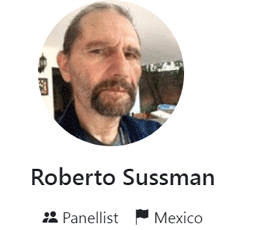
Roberto Sussman, National University of Mexico
“Here’s the question I pose to people who questioned the industry. Why don’t you replicate [these studies]? I am a scientist and I have replicated studies in astrophysics and cosmology, because the results were wrong or questionable, and I replicate them. I showed that they were invalid and an amount of my publications are like this. So I would ask people in tobacco control – if you do not trust the industry, go and replicate them. This is the only way that you could prove your point that research from the industry is deceptive. Otherwise, it’s just rhetoric.”
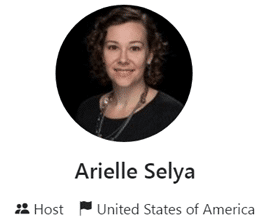
Arielle:
“I was in academia for 10 years. I was always a prolific publisher, but the problem came with getting grants. And, you know, I’m not going to say that if it were only for this factor, I would have been a successful grant awardee, but I would get comments from my reviewers for having the wrong opinion on e-cigarettes and that certainly worked against me to some effect.
I think there’s a lot of bad science because academics respond to publishing incentives, there’s a pressure to publish a lot and they have to gain funding and comply with the priorities of the funding agencies.”
Clive:
“Medical societies, the professional bodies, the activist groups, they’re all creating a cultural environment that is hostile to tobacco harm reduction, and the science to some extent is reflecting that environment and the norms that are being established in that environment.
In politics, emotional empathy counts for a great deal. So never ever feel that you can’t compete in a world of claims that are scientific because if you’ve been a vaper, you have direct experience, and that counts in a big way in politics.”
Panel Discussion #4: The global culture war over THR
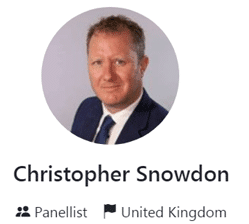
Christopher Snowdon, IEA
“Things are going to get a lot worse before they get any better.”
“We’ve got a great story to tell and these guys [who are against THR] can come up with as much junk science as they like, but we’ve got real-world evidence. Sweden obviously has been a great example for many years, but now you’ve got the comparison between New Zealand and Australia. It’s just staring you in the face, that this is not working. This approach is not working.”
“[Those of us in favour of THR] know we’re basically in the right, we’re on the side of the angels, but we’re outgunned, outnumbered.”
“You could say we should make the argument that it’s a good thing that kids are vaping rather than smoking but good luck with that with the general public. It’s not going to work.”
“I don’t like to use the words ‘moral panic’ about things like this, because sometimes it’s justifiable to some extent”
“There has been a massive upsurge in the number of kids, and I don’t mean 17-year-olds, I mean 10 and 11-year-olds, vaping. Call me a fascist libertarian if you want, but I don’t think that’s a good thing.”
“I’m very libertarian when it comes to adults, but I believe that you have to be fairly rational and fairly well-informed, and I don’t think 11-year-olds are.”
“I’m not going to defend shops selling vapes to children, and we could be doing a lot more about it. But rather than doing something about it, we’re bringing in all these other policies which are having an effect on adults.”
“Let’s face it, that’s actually the plan all along. The ‘think of the children’ argument is nearly always used as an excuse to clamp down on adults doing things.”
“Now, a majority of people in most countries think that vaping is at least as dangerous as smoking. If that’s part of the culture war then, yes, we are fighting a culture war, but we are losing and we shall go on losing, unless we find a billionaire like Mike Bloomberg, who happens to be in favour of tobacco harm reduction and is going to pump a huge amount of money into it.”
“It is a war, and it’s a war of attrition.”
“The other side has a huge amount of money and lots of very prolific academics who keep pumping out basically the same kind of two or three studies on a regular basis looking at zebrafish or talking about the gateway effects. The media love it because the media doesn’t like good news, it likes bad news, and, over time, people have been ground down.”

“One of the strategies of culture wars is to create polarisation. To split people, and this is a political strategy as well, to split people, to facilitate doubt, to create fear, and to encourage people to feel anger towards those people who have a different point of view, the other point of view.”
“Vaping is just another battlefield where they can play this out.”
“A key strategy of any culture war is to use children. One of the objectives is to create fear among the parents.”
“Tobacco control have always used children.”
“They exploit children, and they teach children all of the messages.”
“At world conferences on tobacco control, they would bring youths from around the world, and they would drag the children to select committee hearings, and have the children say the messages and the children don’t like it, they know they’re being used.”

Maria Papaioannoy-Duic, Rights 4 Vapers
“I think the important thing with bureaucrats, is how close they are to vaping, does someone vape in their family?”
“If someone understands harm reduction and believes in the principles of compassion, of meeting us where we’re at, you will find an open door, and you will find an amplifier, someone who will amplify the message within that system.”
“But it’s really about life experience and the belief in harm reduction. A lot of people who are in politics talk a lot about harm reduction, but they truly don’t understand it because they actually think it’s a quitting tool. It’s the ones who understand it, who allow tobacco harm reduction to be part of the spectrum.”
“Are public health officials jealous that they didn’t find vaping? I’m going to say yes. Because when I look at public health officials in my community, they’re my teachers, they’re my nurturers, but I’ve switched the role on them. That makes them uncomfortable.”
“Let us all remember that vaping was created by people who vape, for people who vape. It wasn’t created by big tobacco. They came in after regulations. It was created by people who wanted a solution for themselves, and it grew because of that, and I think that makes people very uncomfortable because we were the patients not the doctors.”
“Every time an NGO writes something that is negative and inaccurate, go to their website, see who funds them. If your government funds them, write a letter to the funding agency to get their logo off there, because your government is not paying them to lie. This has worked effectively in Canada. So, email the rest of their funders. Ask ‘why are you funding someone who lies’? That’s my big thing, fight back and fight back where it hurts, in their pocketbooks.”
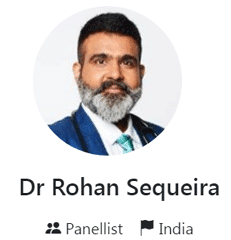
Rohan Sequeira, Cardio-Metabolic Physician
“The vape ban which happened in India was targeted towards the youth not getting access to these products. But what we saw was a paradigm shift.”
“The moment the vape ban came into place, there was a sudden surge in the usage of devices among the youth, which basically did the exact opposite of what it was supposed to have done.”
“There should have been a regulation. There should have been a political discussion on this. There should have been an open-ended forum where things were discussed. But that didn’t happen. It just came in right out of the blue. So, that was something which was surprising for all of us.”
“Whenever you have any kind of prohibition, whether it’s drugs or alcohol, you just drive the whole thing underground. And then you see this booming black market, you don’t have any regulatory control over that. You don’t get any taxes out of that. You’re getting products which have no quality control. You don’t know what the contents are. You get a whole range of problems and that makes the entire matter worse, because now people are falling sick because of inferior quality products.”
“There’s no way you can convince doctors [about tobacco harm reduction]. I’ve seen this pushback happening at every conference. Every place you go, if you start talking about tobacco harm reduction, it’s a closed door. They just don’t want to listen, because the misinformation is so strong, and that needs to be challenged.”
Closing Remarks
The excellent Jessica Harding closed the forum and you can watch her closing speech below.
A few points I wanted to pick up from her speech are below…
“We’ve certainly learned some interesting things in the last few days!.”
“We’ve learned that over a 100 million people across the globe have already made the decision to use vaping and other non-combustible nicotine products in their dedicated efforts to avoid painful and early deaths from smoking.”
“We’ve heard that the prohibition instinct is backfiring we’re now seeing big illegal and deadly black markets on the rise in Australia and the United States”.
“The reality is that if you take something that people want away from them they will still find it ”
“We’ve heard about the ridiculous situation whereby anyone to do with tobacco and nicotine is increasingly being banned from publishing their research in peer-reviewed scientific journals but supermarkets yes supermarkets can publish scientific data on Tobacco harm reduction”
“Please block out some time in your diary to come back to GFN next year in 2025 starting on the 19th of June.”




